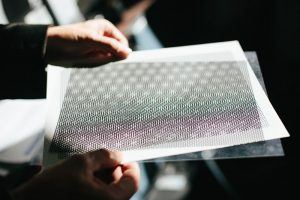Elizabeth Gibney in Nature:
 It was the closest that physicist Pablo Jarillo-Herrero had ever come to being a rock star. When he stood up in March to give a talk in Los Angeles, California, he saw scientists packed into every nook of the meeting room. The organizers of the American Physical Society conference had to stream the session to a huge adjacent space, where a standing-room-only crowd had gathered. “I knew we had something very important,” he says, “but that was pretty crazy.”
It was the closest that physicist Pablo Jarillo-Herrero had ever come to being a rock star. When he stood up in March to give a talk in Los Angeles, California, he saw scientists packed into every nook of the meeting room. The organizers of the American Physical Society conference had to stream the session to a huge adjacent space, where a standing-room-only crowd had gathered. “I knew we had something very important,” he says, “but that was pretty crazy.”
The throngs of physicists had come to hear how Jarillo-Herrero’s team at the Massachusetts Institute of Technology (MIT) in Cambridge had unearthed exotic behaviour in single-atom-thick layers of carbon, known as graphene. Researchers already knew that this wonder material can conduct electricity at ultra-high speed. But the MIT team had taken a giant leap by turning graphene into a superconductor: a material that allows electricity to flow without resistance. They achieved that feat by placing one sheet of graphene over another, rotating the other sheet to a special orientation, or ‘magic angle’, and cooling the ensemble to a fraction of a degree above absolute zero. That twist radically changed the bilayer’s properties — turning it first into an insulator and then, with the application of a stronger electric field, into a superconductor. Graphene had previously been cajoled into this behaviour by combining it with materials that were already known to be superconductors, or by chemically splicing it with other elements. This newfound ability to induce the same properties at the flick of a switch turned heads. “Now you put two, non-superconducting atomic layers together in a certain way and superconductivity pops up? I think that took everyone by surprise,” says ChunNing Jeanie Lau, a physicist at the Ohio State University in Columbus.
More here.
